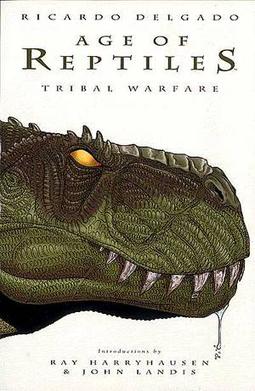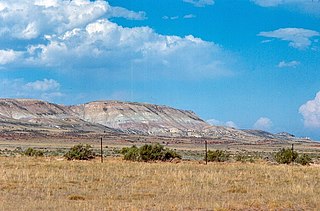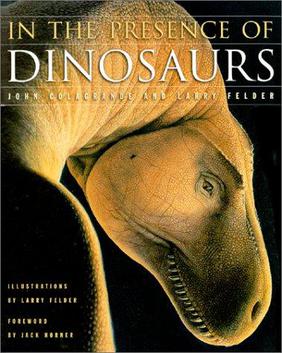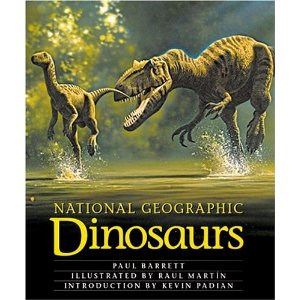
Allosaurus is an extinct genus of large carnosaurian theropod dinosaur that lived 155 to 145 million years ago during the Late Jurassic period. The name "Allosaurus" means "different lizard", alluding to its unique concave vertebrae. It is derived from the Greek words ἄλλος and σαῦρος. The first fossil remains that could definitively be ascribed to this genus were described in 1877 by famed paleontologist Othniel Charles Marsh. As one of the first well-known theropod dinosaurs, it has long attracted attention outside of paleontological circles.

Dinosaur classification began in 1842 when Sir Richard Owen placed Iguanodon, Megalosaurus, and Hylaeosaurus in "a distinct tribe or suborder of Saurian Reptiles, for which I would propose the name of Dinosauria." In 1887 and 1888 Harry Seeley divided dinosaurs into the two orders Saurischia and Ornithischia, based on their hip structure. These divisions have proved remarkably enduring, even through several seismic changes in the taxonomy of dinosaurs.

Ceratosaurus was a carnivorous theropod dinosaur that lived in the Late Jurassic period. The genus was first described in 1884 by American paleontologist Othniel Charles Marsh based on a nearly complete skeleton discovered in Garden Park, Colorado, in rocks belonging to the Morrison Formation. The type species is Ceratosaurus nasicornis.

Torvosaurus is a genus of large megalosaurine theropod dinosaur that lived approximately 165 to 148 million years ago during the Callovian to Tithonian ages of the late Middle and Late Jurassic period in what is now Colorado, Portugal, Germany, and possibly England, Spain, Tanzania, and Uruguay. It contains two currently recognized species, Torvosaurus tanneri and Torvosaurus gurneyi, plus a third unnamed species from Germany.

Dryosaurus is a genus of an ornithopod dinosaur that lived in the Late Jurassic period. It was an iguanodont. Fossils have been found in the western United States and were first discovered in the late 19th century. Valdosaurus canaliculatus and Dysalotosaurus lettowvorbecki were both formerly considered to represent species of Dryosaurus.

Age of Reptiles is a series of comics written by Ricardo Delgado published by Dark Horse Comics.

Como Bluff is a long ridge extending east–west, located between the towns of Rock River and Medicine Bow, Wyoming. The ridge is an anticline, formed as a result of compressional geological folding. Three geological formations, the Sundance, the Morrison, and the Cloverly Formations, containing fossil remains from the Late Jurassic of the Mesozoic Era are exposed.

The Truth About Killer Dinosaurs is a two-part BBC documentary film, directed by Bill Oddie, in which a group of men test out dinosaur weapons, using studies. The first episode determines the winner of a battle between Tyrannosaurus and Triceratops, and the second compares the strength of an Ankylosaurus and Velociraptor. The episodes were broadcast on BBC 1 in August and September 2005. In the U.S., The Truth About killer Dinosaurs was also known as Dinosaur Face-Off.

Saurophaganax is a genus of large allosaurid dinosaur from the Morrison Formation of Late Jurassic Oklahoma, United States. Some paleontologists consider it to be a junior synonym and species of Allosaurus. Saurophaganax represents a very large Morrison allosaurid characterized by horizontal laminae at the bases of the dorsal neural spines above the transverse processes, and "meat-chopper" chevrons. It was the largest terrestrial carnivore of North America during the Late Jurassic, reaching 10.5 metres (34 ft) in length and 2.7–3.8 metric tons in body mass.

Stegosaurus is one of the most recognizable types among cultural depictions of dinosaurs. It has been depicted on film, in cartoons, comics, as children's toys, as sculpture, and even was declared the state dinosaur of Colorado in 1982. Stegosaurus is a subject for inclusion in dinosaur toy and scale model lines, such as the Carnegie Collection.

The Ballad of Big Al, marketed as Allosaurus in North America, is a 2000 special episode of the nature documentary television series Walking with Dinosaurs. The Ballad of Big Al is set in the Late Jurassic, 145 million years ago, and follows a single Allosaurus specimen nicknamed "Big Al" whose life story has been reconstructed based on a well-preserved fossil of the same name. The Ballad of Big Al was like the other episodes of Walking with Dinosaurs made by Impossible Pictures and was produced by the BBC Studios Science Unit, the Discovery Channel, ProSieben and TV Asahi. The episode was aired together with a 30-minute behind-the-scenes episode, Big Al Uncovered.
Valley of the T. rex is a Discovery Channel documentary, featuring paleontologist Jack Horner, that aired on September 10, 2001. The program shows Horner with his digging team as they travel to Hell Creek Formation in search for dinosaur fossils, while also following Horner as he presents his view of the theropod dinosaur Tyrannosaurus rex as a scavenger rather than a predator, as it is often portrayed in popular culture.

In the Presence of Dinosaurs is book that was published in 2000 by John Colagrande and Larry Felder.

National Geographic Dinosaurs is a nonfiction reference book on dinosaurs, written by Paul Barrett, with illustrations by Raúl Martín, and an introduction by Kevin Padian. It was published in 2001 by National Geographic.
The Dinosaurs! is an American television miniseries produced by WHYY-TV for PBS in 1992, featuring some of the then-modern theories about dinosaurs and how they lived. It aired four episodes from November 22 to November 25, 1992.
Last Day of the Dinosaurs is a 2010 Discovery Channel television documentary about the extinction of the non-avian dinosaurs. It portrays the Alvarez hypothesis as the cause of extinction. The documentary was released on August 28, 2010 and narrated by Bill Mondy.
Lego Dino was a Lego theme that was first introduced in 2011 after the discontinued Lego Dino Attack/Dino 2010 theme. The theme was inspired by Jurassic Park film as well as various dinosaurs films. It was eventually discontinued by the end of 2012.

The feeding behaviour of Tyrannosaurus rex has been studied extensively. The well known attributes of T. rex are often interpreted to be indicative of either a predatory or scavenging lifestyle, and as such the biomechanics, feeding strategies and diet of Tyrannosaurus have been subject to much research and debate.














